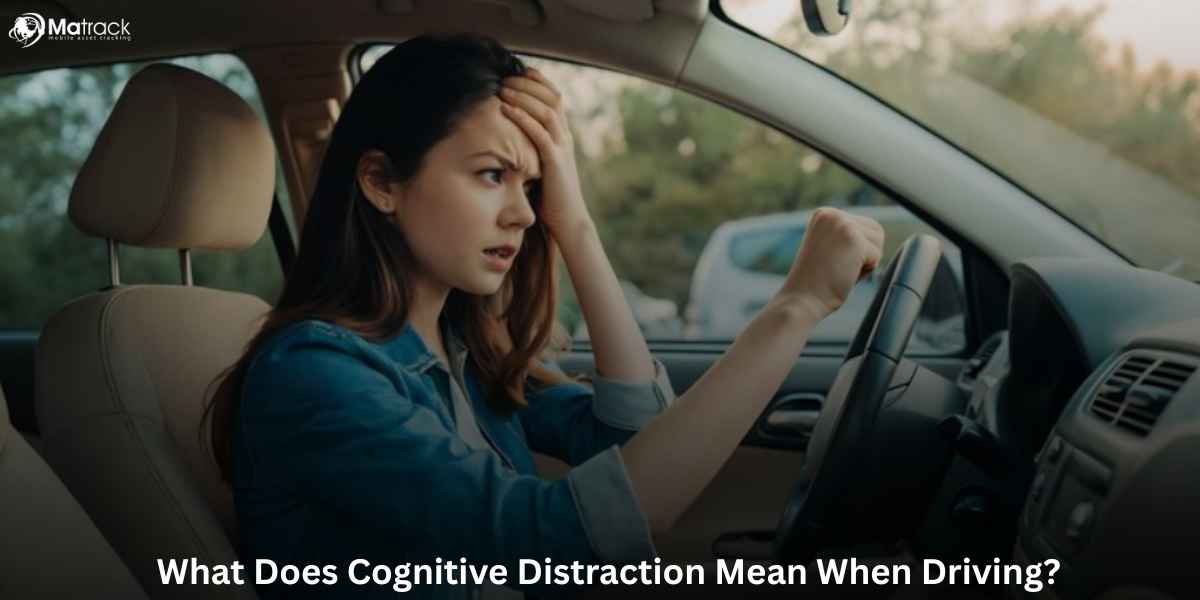Key Takeaways:
- Safe city driving prevents accidents, protects pedestrians, and reduces traffic violations.
- Common urban driving challenges include congestion, aggressive drivers, and limited parking.
- Practical tips like route planning, defensive driving, and avoiding distractions improve city driving.
- Matrack supports safer urban driving with fleet tracking, compliance tools, dash cams, and fuel cards.
Why Safe City Driving Matters
Safe driving in a city protects lives, reduces costs, and keeps traffic moving. It is about awareness, control, and consistency on busy streets.
Prevents Daily Accidents
City roads are crowded with vehicles, pedestrians, and cyclists. Quick stops, sharp turns, and unexpected moves are constant. Staying alert and following the rules reduces the chance of fender benders and minor collisions.
Keeps Pedestrians and Cyclists Safe
Urban areas have more people walking and biking. Checking blind spots, slowing down near crosswalks, and respecting bike lanes protects those without the protection of a vehicle.
Avoids Fines and Tickets
Traffic violations in cities are common and costly. Running lights, illegal turns, or blocking intersections leads to fines, license points, and even higher insurance rates.
Saves Fuel and Reduces Wear
City traffic drains fuel fast when drivers speed up and brake hard. Smooth, steady driving uses less gas and puts less strain on brakes, tires, and the engine.
Makes Traffic Flow Better
Driving safely keeps streets from getting clogged. Staying in lanes, leaving space, and avoiding gridlock at intersections helps traffic move more efficiently.
Builds Confidence Over Time
Safe habits lead to confidence behind the wheel. With regular city driving, calm decision-making and quick thinking become natural.
Common Challenges for Driving in the City
City driving brings constant pressure, quick decisions, and limited space. These are the most common challenges drivers face daily.
Heavy Traffic Congestion
Cities have more vehicles on smaller roads. Delays happen during rush hours, at bottlenecks, and around construction zones. Moving a few blocks can take much longer than expected.
Limited Parking Availability
Finding legal parking in busy areas is difficult. Street spaces fill quickly, garages are expensive, and rules change from block to block. Parking often becomes a stressful part of city driving.
Frequent Stop-and-Go Movement
Traffic lights, pedestrian crossings, and double-parked vehicles create stop-and-go patterns. This makes driving less smooth and increases driver fatigue during longer trips.
Aggressive or Impatient Drivers
City drivers often take risks to save time. Quick lane changes, tailgating, or ignoring signals are common. Reckless driving like this increases the risk of minor crashes and delays for everyone else on the road.
Navigating One-Way Streets and Detours
Urban layouts are complex. One-way streets, no-turn signs, and road closures can make navigation confusing. GPS helps, but drivers still need to react quickly and legally in tight spots.
Pedestrian and Cyclist Density
Crosswalks are everywhere, and people often step out without warning. Cyclists and scooter riders may weave through traffic. Drivers need to check mirrors constantly and yield often.
Complex Intersections and Short Turn Lanes
Some intersections have unclear signs, missing signals, or limited time to turn. Short turning lanes and tight corners make maneuvering more difficult, especially in unfamiliar neighborhoods or during adverse driving conditions like heavy rain or poor visibility.
Constant Distractions in the Environment
Billboards, storefronts, noise, and flashing signs all compete for attention. Inside the car, phone notifications and navigation tools can add to the overload if not managed carefully.
15 Urban Driving Tips For Drivers
1. Know the Terrain: Understand Your Route
Urban traffic isn’t consistent. One street may flow smoothly while the next is jammed. To stay prepared:
- Plan your route using apps like Google Maps or using GPS tracking devices.
- Check for one-way roads and restricted zones.
- Look at live traffic updates before heading out.
Many city roads have bus or bike-only lanes that aren’t always obvious. Misreading a sign could lead to a fine.
2. Time Your Trip Right
City timing matters. Leaving at the wrong hour can double your travel time. To avoid peak chaos:
- Skip rush hours between 7–9 AM and 4–7 PM.
- Start your trip 30 minutes early to stay on track.
- Use traffic prediction tools for better timing.
Major cities like New York or LA are busiest midweek mornings. Shifting your travel time even slightly can make a big difference.
3. Stay Alert: Prioritize Awareness Over Speed
Urban driving isn’t about how fast you go. It’s about how quickly you notice changes. Stay sharp by:
- Watching for pedestrian crossings near parks or schools.
- Expecting sudden stops from cabs or delivery vans.
- Scanning mirrors and intersections every few seconds.
Awareness prevents accidents more than speed ever can.
4. Master the Art of Defensive Driving
The key to defensive driving in the city is predicting problems before they happen. That means:
- Leaving enough space between you and the car ahead.
- Spotting erratic drivers before they become a threat.
- Watching two or three vehicles ahead, not just one.
A good space cushion and strong following distance let you react calmly without slamming the brakes.
5. Embrace Technology but Don’t Rely on It Blindly
Driver-assist tools help but don’t replace attention. Use them wisely:
- Let blind-spot monitors guide, but not decide.
- Use backup cameras to help with tight parking.
- Trust lane assist only as a second layer, not your main focus.
Your senses should stay active even when tech is working in the background.
6. Watch for Bicycles and Motorcycles
Two-wheelers are harder to see and easier to hit. In cities, they appear everywhere. Be cautious:
- Stay out of bike lanes unless turning.
- Always check your mirrors before opening your door.
- Expect scooters and bikes to cut between slow-moving cars.
Just a second of inattention near a bike lane can turn into a serious problem.
7. Handle Intersections with Precision
Intersections in cities can be tight, busy, and unprotected. Make smart moves by:
- Slowing before every crosswalk and checking both sides.
- Signaling at least 100 feet before a turn.
- Never pulling into an intersection unless there’s room to exit.
Blocking intersections doesn’t just slow traffic — it risks tickets and tempers.
8. Use Parking Smarts
City parking eats time and energy if you’re not prepared. Make it easier:
- Use apps like ParkWhiz or SpotHero to find spots quickly.
- Know your area’s street cleaning and permit rules.
- Feed the meter or move before the time runs out.
Parallel parking well takes practice. Angle your turn as your rear clears the front bumper, and adjust as needed.
9. Control Your Emotions
The city can be loud, crowded, and slow. Frustration builds fast. Stay in control by:
- Taking deep breaths when you’re stuck.
- Letting other drivers merge, even if they cut in.
- Listening to calm music or a podcast instead of reacting.
Staying level-headed keeps you safer and helps you make better choices on the road.
10. Understand Local Traffic Laws
Each city has its own quirks when it comes to traffic rules. Before driving somewhere new:
- Look up whether right turns on red are allowed.
- Know the time windows for bus-only lanes.
- Check if U-turns are restricted in certain zones.
Local laws change fast, and tickets for not knowing are still tickets.
11. Drive a Compact Car in Tight Cities
In urban environments, size matters — and smaller is better. A compact car gives you:
- Easier parking in tight curbside spaces.
- Better turns in narrow lanes or alleys.
- More fuel savings during stop-and-go traffic.
Larger vehicles become harder to manage when streets get crowded.
12. Fuel Efficiency Strategy
Stoplights, traffic, and idle time drain your tank. Drive smarter by:
- Easing into starts and stopping gradually.
- Turn the engine off if you’re stopped for more than a minute.
- Using eco-mode to conserve energy when available.
Smooth driving not only saves fuel but protects your car’s components too.
13. Avoid Distractions Entirely
Urban areas overload your senses. Don’t add to the chaos. Stay focused:
- Keep your phone out of reach or on “Do Not Disturb.”
- Avoid multitasking while moving — no eating or adjusting playlists.
- Ignore outside distractions like loud signs or passing events.
A single glance at your phone can cost you your reaction time.
14. Prepare for Unexpected Hazards
Anything can happen in a city block. Be ready for:
- Construction zones that change lanes without notice.
- Debris or trash in the road after events or storms.
- Emergency vehicles needing sudden clearance.
Quick reactions matter most when the situation changes without warning.
15. Practice Makes Confidence
The more you drive in the city, the more natural it feels. Build your skills by:
- Starting with quieter streets during slower hours.
- Taking the same route often to learn traffic patterns.
- Gradually exploring new areas once you’re comfortable.
Confidence grows from repetition. Each trip sharpens your instincts and timing.
How Matrack Helps Your Fleets to Drive Safely in the City
Matrack’s real-time fleet tracking helps drivers avoid high-traffic zones and unsafe city routes. It alerts fleet managers to harsh stops, speeding, or lane changes common in urban driving.
Its compliance tools ensure drivers follow city-specific rules like restricted zones and idling limits. This prevents city fines and keeps operations running without delays.
Matrack’s fleet dash cam captures crowded intersections and tight turns, helping review risky urban situations. The fuel card supports smart refueling in dense areas where gas stations are limited or expensive.



